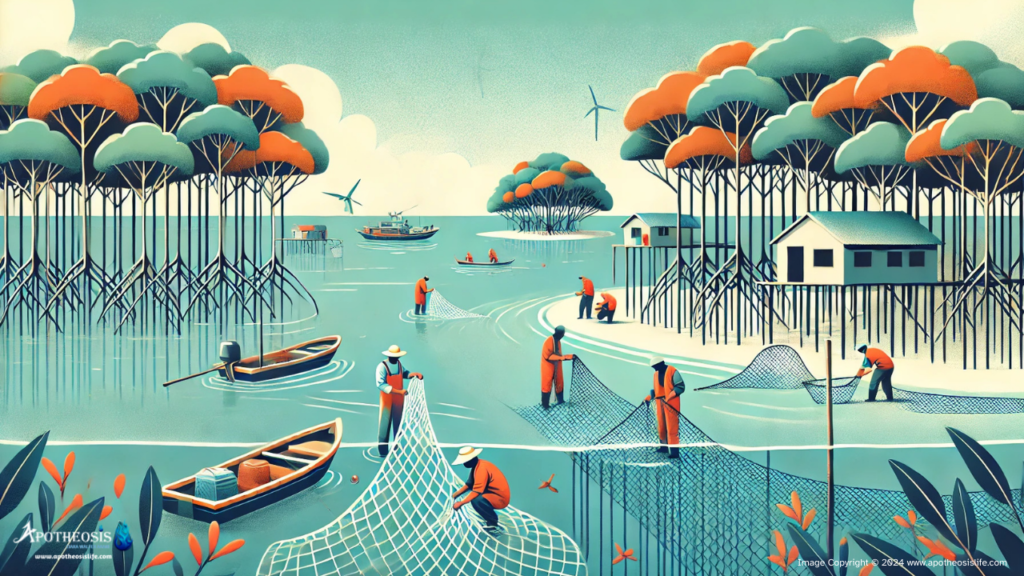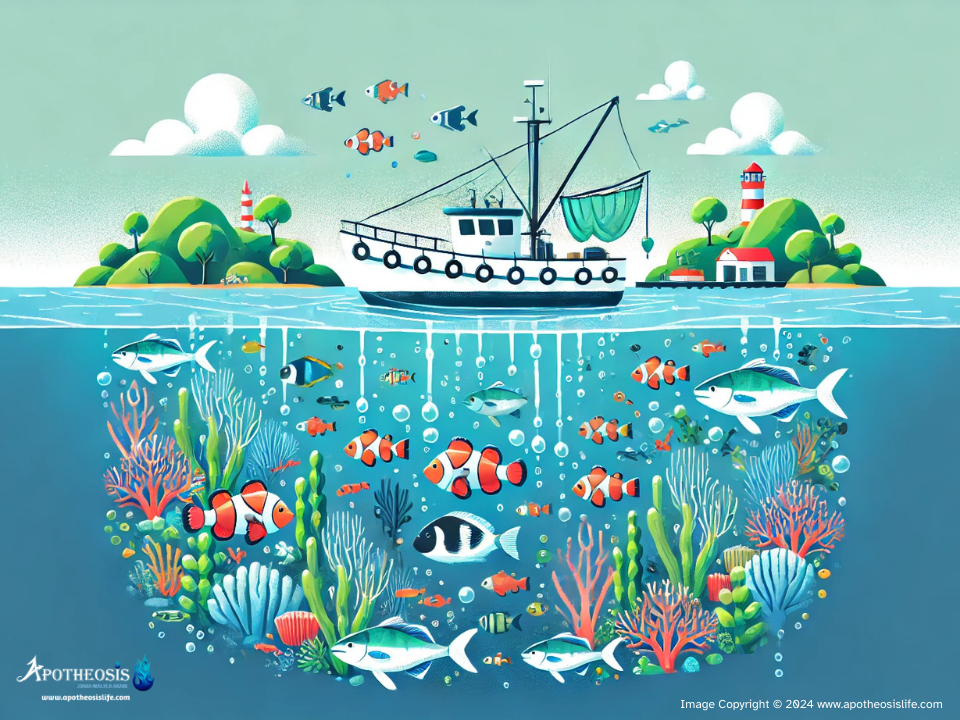As global demand for seafood continues to rise, the need for sustainable fisheries has become more urgent than ever. Overfishing, climate change, and habitat destruction threaten marine ecosystems and the livelihoods of coastal communities worldwide. Sustainable fisheries offer a pathway to balance the preservation of marine biodiversity with the economic well-being of millions who depend on the ocean.
What Are Sustainable Fisheries?
Sustainable fisheries ensure that fish populations remain healthy and productive while protecting marine ecosystems and supporting the communities that rely on them. This approach involves managing fishing practices to avoid overexploitation, minimize bycatch (the capture of non-target species), and safeguard habitats.
In practical terms, sustainable fisheries consider the entire marine ecosystem, focusing on long-term resource management rather than short-term profits. Regulatory frameworks, technological advancements, and community involvement all play critical roles in achieving this balance.
Why Are Sustainable Fisheries Important?
1. Preserving Marine Biodiversity
Marine ecosystems are interconnected, with each species playing a role in maintaining balance. Overfishing disrupts these ecosystems, leading to population imbalances and the collapse of key species. For example, the decline of predator species like tuna can result in an overabundance of smaller fish, which in turn affects coral reefs and other habitats.
Sustainable fisheries help maintain biodiversity by regulating catch limits and protecting vulnerable species, ensuring that ecosystems remain resilient in the face of environmental changes.
2. Supporting Coastal Communities
Globally, an estimated 120 million people depend on fisheries for their livelihoods, particularly in coastal regions. Unsustainable practices jeopardize these jobs and the food security of millions. Sustainable fisheries ensure a steady supply of fish for local and global markets, supporting the economic and nutritional needs of coastal communities.
3. Combating Climate Change
Healthy marine ecosystems, particularly those with robust fish populations, contribute to the fight against climate change. Oceans act as carbon sinks, absorbing and storing large amounts of CO₂. Overfishing and habitat destruction reduce this capacity, making sustainable management crucial for climate mitigation.
Key Practices for Sustainable Fisheries
1. Implementing Science-Based Management
Effective fisheries management relies on accurate data about fish stocks, reproductive rates, and ecosystem health. Science-based policies, such as catch limits and seasonal closures, prevent overfishing and allow fish populations to recover.
2. Reducing Bycatch
Bycatch poses a major threat to marine life, often affecting species like dolphins, sea turtles, and seabirds. Sustainable fisheries use gear modifications, such as circle hooks and turtle excluder devices, to minimize unintended catches.
3. Protecting Marine Habitats
Fishing practices like bottom trawling can destroy sensitive habitats such as coral reefs and seagrass beds. Sustainable fisheries promote methods that protect these habitats, ensuring the overall health of marine ecosystems.
4. Adopting Certification Programs
Certifications such as the Marine Stewardship Council (MSC) label help consumers identify sustainably sourced seafood. These programs set rigorous standards for fisheries, encouraging responsible practices and promoting transparency in seafood supply chains.
5. Engaging Coastal Communities
Involving local communities in fisheries management fosters stewardship and accountability. Many sustainable fisheries initiatives include training programs, co-management systems, and economic incentives for sustainable practices.

Image Copyright © 2024 www.apotheosislife.com
Examples of Sustainable Fisheries in Action
1. Alaskan Salmon Fisheries
Alaskan salmon fisheries are often cited as a gold standard for sustainability. Strict quotas, scientific monitoring, and habitat protection ensure that salmon populations remain healthy while supporting local economies.
2. Norwegian Cod Fisheries
Norway’s cod fisheries use a combination of science-based quotas, gear restrictions, and enforcement measures to maintain healthy fish stocks. Their sustainable practices have restored cod populations that were once overexploited.
3. Community-Based Fisheries in the Philippines
In the Philippines, community-based fisheries management has empowered local fishers to protect coral reefs and mangroves, leading to increased fish stocks and improved livelihoods.
The Role of Consumers in Supporting Sustainable Fisheries
Consumers play a vital role in promoting sustainable fisheries. By choosing seafood with certifications like MSC or Aquaculture Stewardship Council (ASC), individuals can drive demand for responsibly sourced products. Educating oneself about sustainable seafood options and avoiding overfished species further supports conservation efforts.
Challenges in Achieving Sustainable Fisheries
1. Illegal, Unreported, and Unregulated (IUU) Fishing
IUU fishing undermines sustainability efforts by depleting fish stocks and threatening marine ecosystems. Enhanced monitoring and international cooperation are needed to combat this issue.
2. Climate Change
Rising ocean temperatures and acidification affect fish behavior, reproduction, and habitat availability. Sustainable fisheries must adapt to these changes by implementing dynamic management strategies.
3. Global Demand for Seafood
As seafood consumption grows, balancing demand with sustainable practices becomes increasingly challenging. Scaling up certification programs and engaging large seafood markets are critical for meeting this demand responsibly.
The path to sustainable fisheries requires collaboration among governments, industries, scientists, and communities. Innovations such as satellite tracking for IUU fishing, AI-driven stock assessments, and ecosystem-based management approaches hold promise for the future.
By prioritizing marine conservation, reducing overfishing, and empowering coastal communities, sustainable fisheries can ensure the health of our oceans and the livelihoods of millions for generations to come.
Details of the Featured Image
Sustainable Fisheries: Balancing Marine Ecosystems and Livelihoods
An illustration of a fishing boat at sea with vibrant marine life, including fish and coral reefs below the surface, symbolizing eco-friendly and sustainable fishing.
Image Copyright © 2024 www.apotheosislife.com
Author
Ziara Walter Akari
© 2024 www.apotheosislife.com
Citations
- Global Impact of Overfishing
Food and Agriculture Organization (FAO). The State of World Fisheries and Aquaculture 2022. Available at: https://www.fao.org/. - Marine Stewardship Certification Standards
Marine Stewardship Council (MSC). Sustainability Standards. Available at: https://www.msc.org/. - Alaskan Salmon Sustainability Efforts
Alaska Department of Fish and Game. Sustainable Salmon Management. Available at: http://www.adfg.alaska.gov/. - Community-Based Fisheries in the Philippines
WorldFish Center. Empowering Communities to Protect Marine Resources. Available at: https://www.worldfishcenter.org/.
